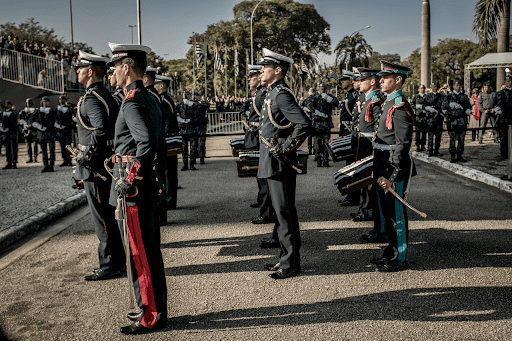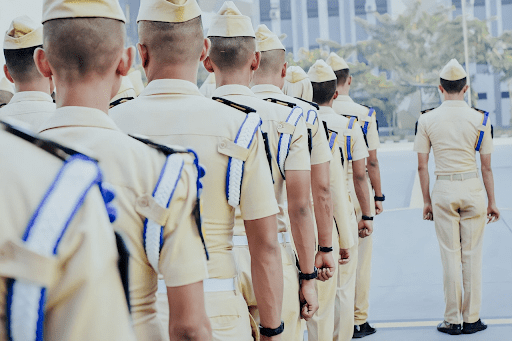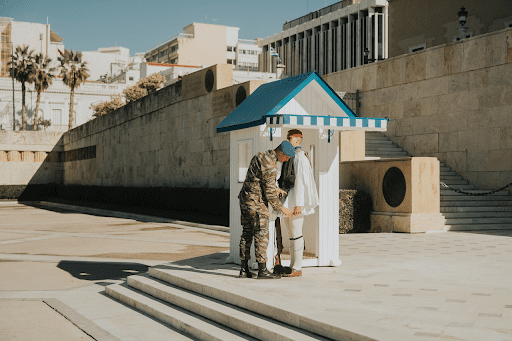Most people don’t lose much sleep over proper dressing. However, military personnel need to follow stringent dress codes throughout the day. These rules for military uniforms vary depending on the occasion and place of service.
For those looking to join any service, there are essential etiquette lessons to derive from these uniform rules, especially when dressing for formal and semi-formal occasions.
Uniforms are a crucial component of the military culture, changing in style, colors, and function over the years. Therefore, knowing some of these rules will surely give every defense aspirant a considerable leg.
Below are seven must-know of these military uniform rules.
1. Different Uniforms Serve Different Purposes

Irrespective of the specific military branch, each service will wear different uniforms. Typically, every member of these branches has a daily suit-like service uniform, compart uniform, formal dress uniform, camouflage, and a physical training uniform.
Those looking forward to a military career can get military clothing online and begin exploring their rules. However, you’ll find minor iterations per the service member’s job description, specific location, and the season.
For instance, the Navy provides its personnel with a formal uniform called “service dress whites.” This uniform usually is for formal events in the summertime. During the other seasons of the year, Naval personnel wear their “service dress blue” uniform to traditional and ceremonial occasions.
2. Certain Uniforms Differ According to Rank
Another notable rule relates to the different rankings in the various military branches. The formal dress worn by Air Force officers is known as the “Office Mess Dress.” Once you see an officer wearing this attire, you’ll notice they have no nametags, and you don’t need to salute them outdoors.
However, every other facet of the uniform is mandatory, such as the position of their blue satin bowtie and metals.
Other ranking Air Force members with ranks have similar attires but with minor changes to indicate their ranks. Therefore, the formal uniforms of enlisted personnel differ slightly from higher ranks. The same applies to all branches of the military.
3. Some Rules Are Uniform-specific

At this point, it’s undeniable that service members must keep up to date with several regulations while dressing up for the day. For instance, Army soldiers donning camouflage attires must keep their sand-colored T-shirt or tan tucked in and ensure the jacket remains completely closed every time.
Wearers should also position their caps properly with insignia forward and the name facing the back. Also, the wearers’ hair shouldn’t interfere with the placement of the caps.
In contrast, when sporting their service uniform, which resembles a suit, service members have three options for knotting their ties: the Windsor, the half-Windsor, and the four-in-hand knot. Additionally, the beret—the cap worn with this uniform—is meant to appear off-centered.
Thus, military personnel must ensure the “flash” (Army symbol) of the beret is placed across their left eye when wearing it, and any extra fabric must be slung to the right.
4. There Are Periodic And Minor Changes to Dress Codes
Every few years, new military uniforms are normally released by each branch, along with new regulations. However, lesser alterations occur in between these major uniform overhauls.
For instance, the Navy’s regulations have undergone 37 revisions since 2015. The Naval Dress Code was updated to reflect modern attitudes toward things like headgear, tattoos, and the use of civilian handbags by female military members.
Updates to uniform regulations are frequently made for every military division. Therefore service personnel must stay informed of these changes to guarantee they always portray a polished and professional image when representing their service branch.
5. Remain Sober
Under no circumstance should a military member wear any attire that induces feelings of apathy or hatred. Therefore, you want to dress in a way that shows you to be sober without drawing too much attention to yourself.
The notion behind this type of etiquette is for the attire to show little outside but build ample confidence, letting the dress do the talking.
6. Respect the Uniform at All Times

Once you put on any uniform in the military, be it for field, field, or ceremonial work, you should pay it the utmost respect. Military personnel are not allowed to tweak their uniforms for comfort.
7. Don’t Experiment
Experimenting with different attire isn’t something members of the military are renowned for due to the rules. However, since it’s a complementary point for people looking to join the military but not yet in, you can shake things up with new dress combinations as much as you like. https://techbullion.com/
For instance, if you own three pairs of pants, three shirts, and the same number of belts and ties, you combine these for 81 combinations. Choose the most good-looking combinations and move with them.
Conclusion
As the saying goes, “As a man dresses, so is he.” Your dress code is essential to your everyday routine that those looking to join the military can’t ignore. Most of these rules are meant to invoke pride and confidence.
Despite the constant changes in the regulations, you can remain in tune with the military’s dress code with these seven etiquettes. Now step out in style!





























